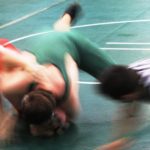Do you open the Oregonian’s sports page and find soccer? If it’s not the World Cup, it’s the Timber or Thorns’ players flinging around.
Isn’t it still baseball season? We expect to see diving catches in the out field, runners breaking up double plays, the stretch on first, not wild soccer players kneeing the vertebrae loose on their opponents.
For those new to soccer, the vertebrae are not part of the ball.
With the U.S. national team eliminated after a longer run than expected, all soccer drama is game. The Big O gets it, too. They balance international news with local flavor, this time with a poll on ‘‘Oregon’s Greatest Athlete.’
You can still vote, but here’s the top three with reasons why:
Danny Ainge via wiki:
Ainge was a standout high school athlete, the only person to be a high school first team All-American in football, basketball, and baseball.
Three sport all star at North Eugene against some of the toughest competition in the state, including the North Bend Bulldogs.
You could call Ainge White Jordan, except MJ never made it to the big leagues. You could call him Bo before Bo (Jackson) but do that and show you don’t know Bo.
Call him a winner with more drive than Greg Biffle. He played beside Larry Bird and found success as President of Basketball Operations for the Celtics before Bird has as the Indiana Pacers’ president.
Across all levels of sport, from player to administrator, Danny Ainge owns Oregon’s Lifetime Of Athletic Achievement Award.
The following two are more important as Oregon’s Greatest Athlete outside the state boundary.
Steve Prefontaine via wiki:
In his four years at the University of Oregon, Prefontaine never lost a collegiate (NCAA) race at 3 miles/5,000 meters or 6 miles/10,000 meters. Returning for his senior year, he ended his collegiate career with only three defeats in Eugene, all in the mile. It was during this year that Prefontaine began a protracted fight with the Amateur Athletic Union (AAU), which demanded that athletes who wanted to remain “amateur” for the Olympics not be paid for appearances in track meets. Some viewed this arrangement as unfair, because the participants drew large crowds that generated millions of dollars in revenue, with the athletes being forced to shoulder the burden of all their own expenses without assistance. At the time, the AAU was rescinding athletes’ amateur status if they were endorsed in any way. Because Prefontaine was accepting free clothes and footwear from Nike, he was subject to the AAU’s ruling.
How did this small man run from Coos Bay, through North Bend, to Eugene, then the world? People still call his name out like you hear Free Bird shouted at Lynyrd Skynyrd shows.
Maybe it was the mustache, the lush Oregon moss that shamed the mangy caterpillar fellow Olympian Mark Spitz forgot to shave.
Maybe it was the hair, a semi-Beatle do that marked him a Joe Namath-style rebel on and off the track.
His was the face of freedom for track stars, a mini-Samson running through walls with his locks flowing, a Curt Flood-like character helping his fellow athletes to a piece of the pie controlled by meet organizers and sports officials.
If the first two examples aren’t enough for Pre, let the man’s body of work stand on it’s own. He once owned seven American track records and carried Nike at the same time.
Now Nike carries the Prefontaine legend forward. Pre helped us see the sham in amateur sports. Forty years later the NCAA is figuring it out.
Rick Sanders
Another small Oregon man once straddled the earth, at least I-405, as a Colossus. From Lincoln High School to Portland State University, then into the record books, Rick Sanders laid down a huge footprint.
In a world that celebrates firsts, Sanders was the first World Champion in his sport.
The sport? Wrestling.
A winner at every level, it was how he won that brought notice. He didn’t just beat opponents, he pinned them. In the most complete sign of victory in all of sports. You. Are. Trapped. And. Can. Only. Go. Where. You’re. Forced. Until. You. Can’t. Move.
That’s a pin. It’s awful when it happens to you, great for the other guy and the crowd. Sanders made it look easy.
What do a 1-0 soccer game, a 1-0 baseball game, and a 2-1 wrestling match have in common? They all drive casual fans away. They get bored.
They want to see athleticism, not gamesmanship, and that’s what Rick Sanders brought to the mat.
He followed up his Olympic silver medal performance from the ’68 Mexico City Games with a world title in Argentina and another Olympic silver at the Munich Games in ’72. The beard and long hair created a certain impression. Call him a flake who can’t win the big one and you’d be wrong.
Watch clips of the man competing and you’ll think no one could win if he didn’t.
A Sanders wrestling clip shows grace, balance, and strength in unparalleled proportions. Most athletes in top form have the same qualities.
Watching Sanders reveals the uncoachable, the unexpected. Call it timinig. Call it instinct. He needed it all to wade through waves of Eastern Europeans and Russians on the international scene.
Best to call Sanders an athlete who sees advantages others don’t, or see and can’t exploit. You wouldn’t coach wrestlers to be like Rick. He took the sort of chances only he could recover from.
Too many opponents learned too late that things don’t always work out the way they planned. That goes for Danny Ainge, Steve Prefontaine, and Rick Sanders. Choose any of the three as a number one.
(originally posted on oregonsportsnews.com)



